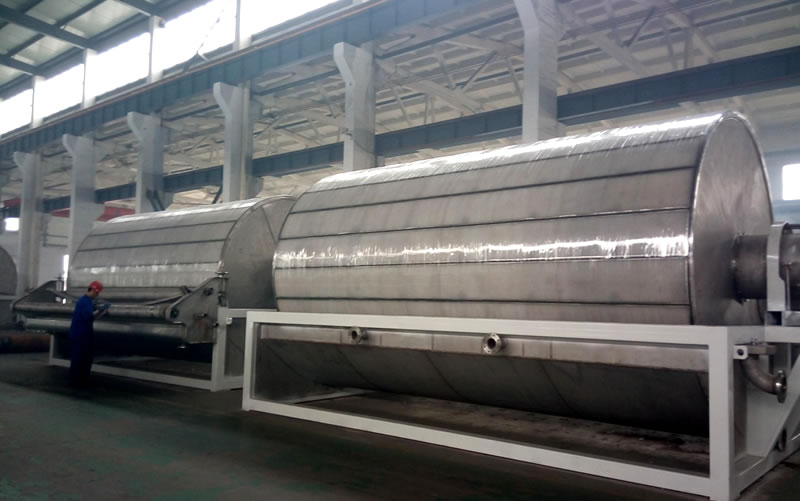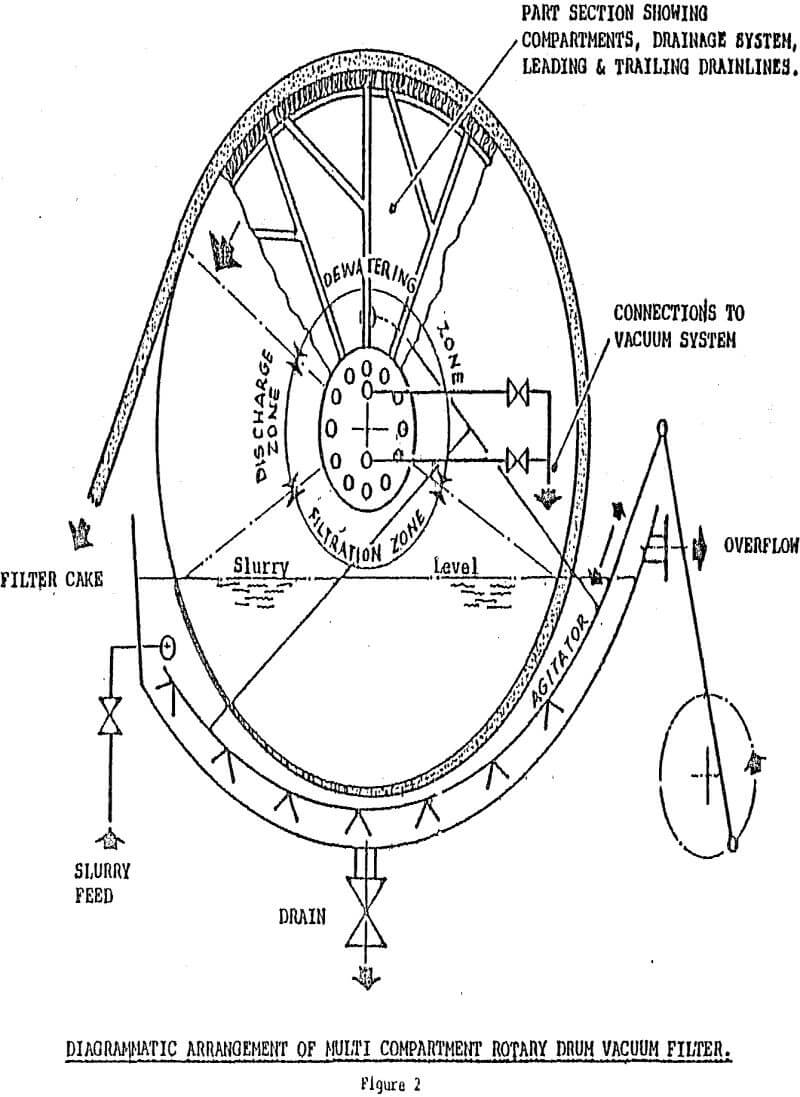

This is the standard drum filter discharge. Belt discharge is used if slurry with moderate solid concentration is used or if the slurry is easy to filter to produce cake formation or if a longer wear resistance is desired for the separation of the mentioned slurry. The products for this mechanism are usually sticky, wet and thin thus, requiring the aid of a discharge roll.


The filter cloth is washed on both sides with each drum rotation while discharging filter cakes. High energy consumption by the vacuum pump.īasically there are five types of discharge that are used for the rotary vacuum drum filter such as belt, scraper, roll, string and pre coat discharge.
Rotary vacuum filter crack#
The cake tends to crack due to their air drawn through by the vacuum system, so that washing and drying are not efficient. The discharge cake contains residual moisture. Besides the drum, other accessories, for example, agitators and vacuum pump, vacuum receivers, slurry pumps are required. Due to the structure, the pressure difference is theoretically limited to atmospheric pressure (1 bar), and in practice somewhat lower. Can produce relatively clean product by adding a showering device. The process can be easily modified (pre-coating filter process). The variation of the drum speed rotating can be used to control the cake thickness. The rotary vacuum drum filter is a continuous and automatic operation, so the operating cost is low. The advantages and limitations of rotary vacuum drum filter compared to other separation methods are: The separation of the mycelia from the fermentation liquor in the manufacture of antibiotics. Examples of pharmaceutical applications include the collection of calcium carbonate, magnesium carbonate and starch. If the slurry contains considerable amount of solids, that is, in the range of 15-30%. The rotary filter is most suitable for continuous operation on large quantities of slurry. At the final step of the separation, the cake is discharged as solids products and the drum rotates continuously to another separation cycle. The cake is dry because the vacuum drum is continuously sucking the cake and taking the water out of it. When the cake is rotating out, it is dewatered in the drying zone. The drum is suspended on an axial over a trough containing liquid or solids slurry with approximately 50-80% of the screen area immersed in the slurry.Īs the drum rotates into and out of the trough, the slurry is sucked on the surface of the cloth and rotated out of the liquid or solids suspension as a cake. It offers a wide range of industrial processing flow sheets and provides a flexible application of dewatering, washing and/or clarification.Ī rotary vacuum filter consists of a large rotating drum covered by a cloth. 
Rotary vacuum drum filter (RVDF), patented in 1872, is one of the oldest filters used in the industrial liquid-solids separation.
7 Necessary post treatment for waste stream for clarifierīasic fundamentals Rotary vacuum drum filter. 6 Necessary post treatment for waste stream for thicker. 5.2.6 Pre coat filter operation heuristics. 5.2 Discharge mechanism adjustment heuristics. 5.1 Basic operation parameters heuristics. 4 Main process characteristics and assessment.








 0 kommentar(er)
0 kommentar(er)
